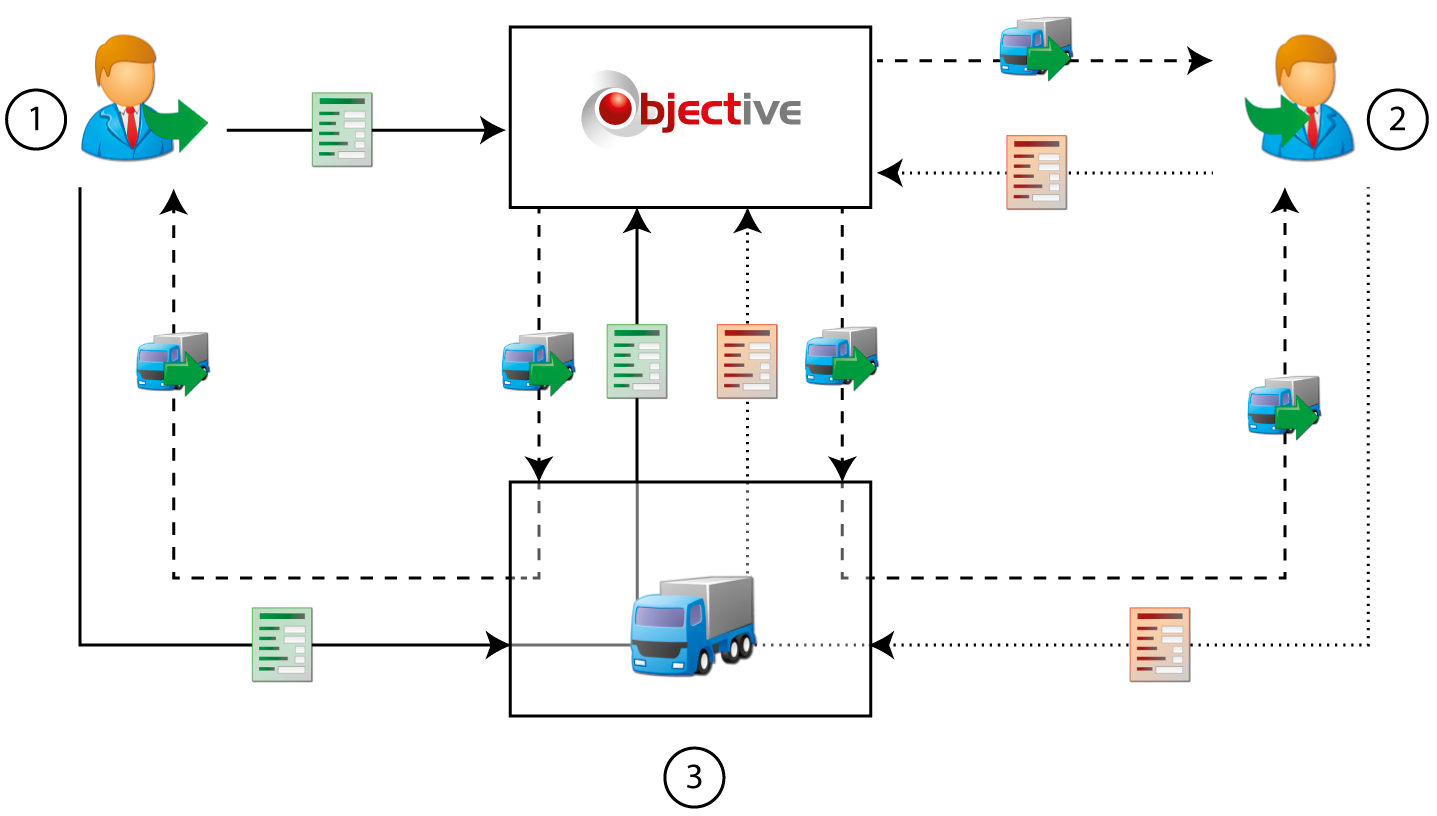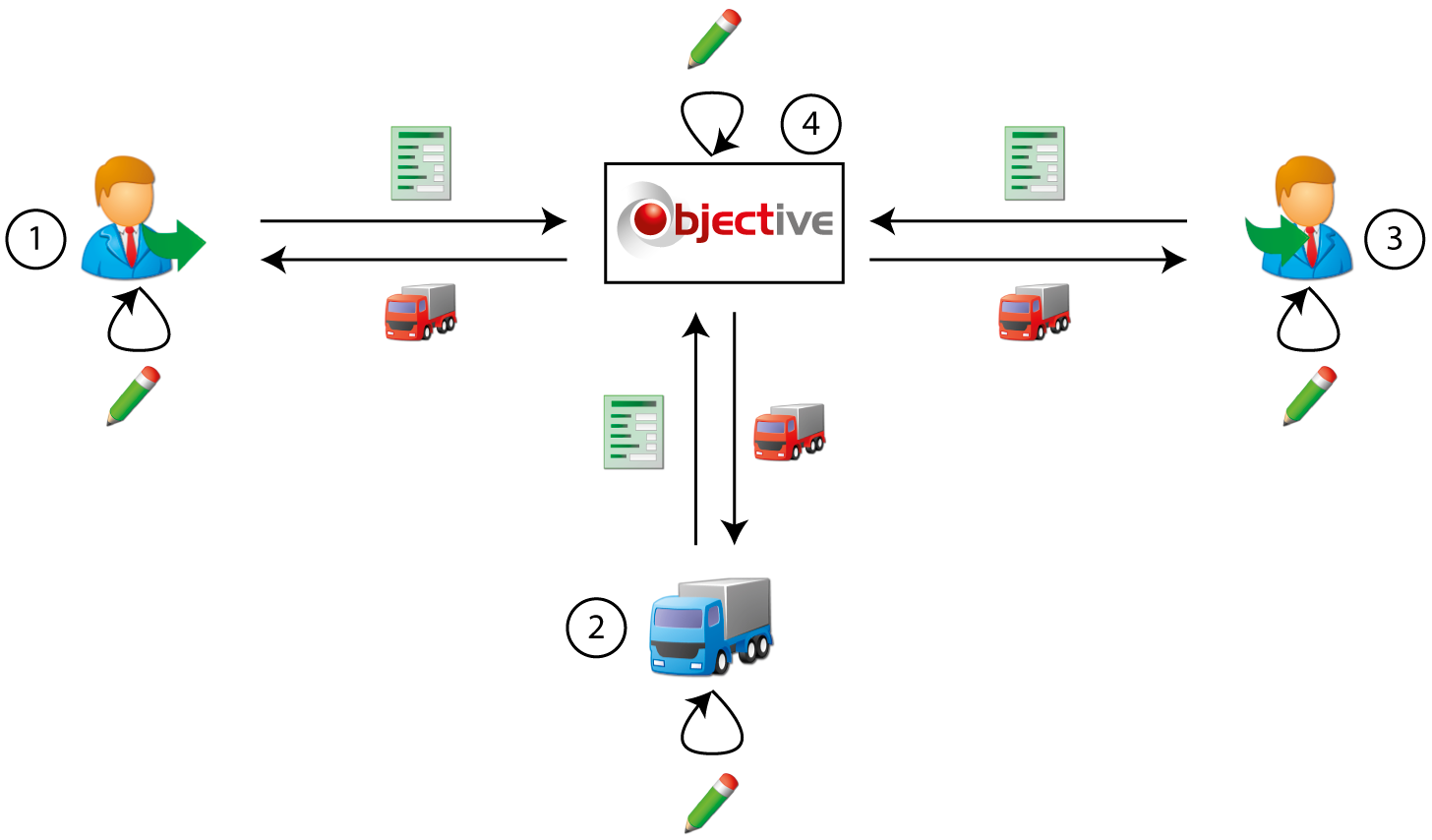Asset Management
Objective supports management and tracking of logistic carriers.
- Whether the carrier type (container type) of the asset is controlled or not, is set via the Configurator. This entails the tracking and registering of inbound and outbound traffic of the carrier type. Which carriers need to be tracked?
- It will be decided per customer, supplier and carrier (transporter) if tracking needs to take place.
|
Asset control at the customer or supplier has precedence over asset control at the carrier (transporter)! For example: Carriers from an asset controlled carrier (transporter) arriving at an asset controlled customer will be offset against the number of assets of the customer! |
Based on these settings, Objective can generate an overview and keep track of history for each defined carrier per customer, supplier and carrier (transporter).
This module is usually used when working with a CHEP or EURO exchange system or when disposable pallets are billed to the end customer.
Objective will calculate the number of carriers for inbound and outbound order-related movements and process this in the inventory balance. These movements can be manually corrected by the Supervisor.
Registration of assets is done automatically upon receipt ![]() , return
, return ![]() or shipment
or shipment ![]() of items.
of items.

Receipt ![]() of a load of empty pallets from a supplier (1), carrier (transporter) (2) or customer (3) AND shipment
of a load of empty pallets from a supplier (1), carrier (transporter) (2) or customer (3) AND shipment ![]() of a load of empty pallets to a supplier (1), carrier (transporter)(2) or customer (3) is registered manually.
of a load of empty pallets to a supplier (1), carrier (transporter)(2) or customer (3) is registered manually.

| Asset Management is preferably done in the element Assets. |
| If you insist on managing the assets via suppliers, carriers or customers, first select the supplier, carrier or customer and choose the tab Overview Assets. |
